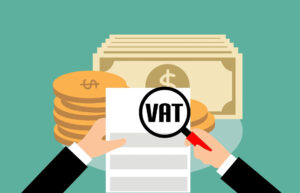How to Read and Understand your Balance Sheet

When it comes to business finance, few documents hold as much significance as the balance sheet. It’s not just a financial statement; it’s a factual snapshot of your business’s financial standing. Understanding your balance sheet is about unravelling the numbers and comprehending the essential components that define your financial health.
In this article, we’ll take a straightforward approach to understanding the balance sheet. Whether you’re an experienced entrepreneur or new to the world of business finance, mastering the art of reading and interpreting a balance sheet is essential.
At Joanna Bookkeeping, our goal is to provide business owners with a clear understanding of what a balance sheet is, break down its crucial elements, and shed light on the director’s loan account (a vital aspect for limited companies). By the end of this article, you’ll have the knowledge and confidence to navigate your balance sheet effectively, enabling you to make informed financial decisions for your business.
What is a Balance Sheet?
A balance sheet is a financial statement that provides a snapshot of your company’s financial position at a specific point in time. It’s like a financial X-ray that reveals how your business’s assets, liabilities, and equity are structured. The primary principle of a balance sheet is the accounting equation:
Equity = Assets – Liabilities.
In other words, it shows that a company’s assets must equal the sum of its liabilities and equity.
It serves as a critical tool for business owners, investors, creditors, and other stakeholders to assess the financial health and stability of a company. By analysing the balance sheet, you can gain insights into your company’s liquidity, solvency, and overall financial performance. You will also need the information from the balance sheet to check these crucial rations to save yourself from bankruptcy.
Understanding Assets
Assets are the resources owned by your business that have economic value. They are categorised into two main groups: current assets and noncurrent assets (also known as fixed assets).
Current Assets
These are assets that are expected to be converted into cash or used up within one year. Common examples include:
✅Cash and cash equivalents – The most liquid assets, including cash on hand and in bank accounts.
✅Accounts receivable – Money owed to your company by customers who have purchased goods or services on credit. So, if you invoiced someone and the payments hasn’t cleared yet, this will show a balance on your Accounts receivable account. If you operate a cash business and don’t offer anything on credit, you won’t see this account in your accounts.
✅Inventory – The value of goods held by your business for resale or production. Not every business will have this account
✅Prepaid expenses – Expenses paid in advance, such as insurance or rent.
Non-Current Assets
These assets have a longer lifespan and are not expected to be converted into cash within one year. They include:
✅️Tangible assets – Property, plant, and equipment, buildings, machinery, and vehicles.
✅Intangible assets – Non-physical assets like patents, trademarks, and copyrights.
✅Investments – Long-term investments in stocks, bonds, or other businesses.
Understanding Liabilities
Liabilities represent the financial obligations of your business to external parties. They are also divided into current liabilities and non-current liabilities.
Current Liabilities
These are debts and obligations that must be settled within one year. Common examples include:
✅Accounts payable – Money owed to suppliers for goods or services purchased on credit.
✅Short-term loans – Borrowed funds with repayment due within a year. This can include tax payments to HMRC for salaries, VAT or to the directors to repay the loans.
✅Accrued expenses – Expenses that have been incurred but not yet paid, such as utilities. You will accrue for an expenditure if you haven’t received a bill from your supplier yet but the cost relates to the period you want to prepare.
Non-Current Liabilities
These are long-term debts and obligations with a repayment period exceeding one year. They include:
✅Long-term loans – Borrowed funds with a repayment schedule extending beyond one year. For example, a loan from a bank.
✅Bonds payable – Debt securities issued by the company to investors.
✅Deferred tax liabilities: Future tax obligations that result from temporary differences between book and tax accounting.
Professional accounting support
Need help with financial reporting?
Our Oxford-based accountant can help. Get in touch today.
Understanding Capital and Reserves
The capital and reserves section of the balance sheet represents the owners’ equity in the business. It includes various components, such as:
✅Share Capital – The amount of money invested by shareholders when the company was initially formed. This can be very often just that £1 pound you said you paid when you formed your limited company.
✅Retained Earnings – The cumulative net profits or losses of the company that have not been distributed to shareholders as dividends.
✅Other Reserves – These may include reserves set aside for specific purposes, such as a legal reserve or a capital redemption reserve.
The capital and reserves section reflects the accumulated value of the business’s net assets attributable to its owners. It represents the owners’ claim on the company’s assets after deducting liabilities.
Director's Loan Account
An Important Aspect for Limited Companies
For limited companies, the director’s loan account is a crucial element of the balance sheet. This account tracks any money that a director lends to or borrows from the company.
Positive Director’s Loan Account
When a director lends money to the company, it creates a positive balance in the director’s loan account. This means that the company owes money to the director.
Overdrawn Director’s Loan Account
If a director borrows money from the company or takes out more than they put in the first place, it results in an overdrawn director’s loan account. This situation can have tax implications and should be managed carefully to avoid unexpected tax liabilities for both the company and the director.
Understanding the director’s loan account is crucial for ensuring compliance with tax regulations and maintaining proper financial records. It’s advisable to consult with a financial expert or accountant to navigate this aspect effectively.
For even more in-depth information, check out our previous blog What Is A Director’s Loan Account?
A balance sheet is a vital financial statement that provides critical insights into your business’s financial health. By understanding its components, including assets, liabilities, capital, and reserves, you can make informed decisions, assess your financial stability, and plan for the future. Additionally, for limited companies, managing the director’s loan account is essential to avoid tax complications. If you require further guidance or assistance in interpreting your balance sheet or any financial matters, don’t hesitate to reach out to Joanna Bookkeeping. We’re here to help you navigate the complexities of your business finances and ensure financial success.

Your Accountant in Oxford
Oxford Office
Joanna Bookkeeping
The Wheelhouse Angel Court
First Floor, Angel Court
81 St Clements St
Oxford
OX4 1AW
Connect
joanna@joannabookkeeping.co.uk
01865 591952





